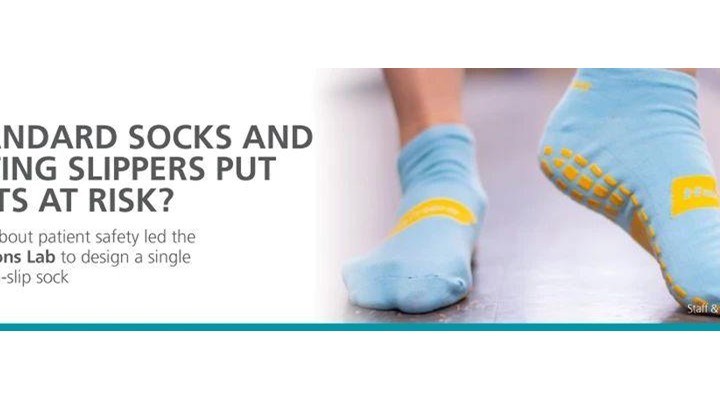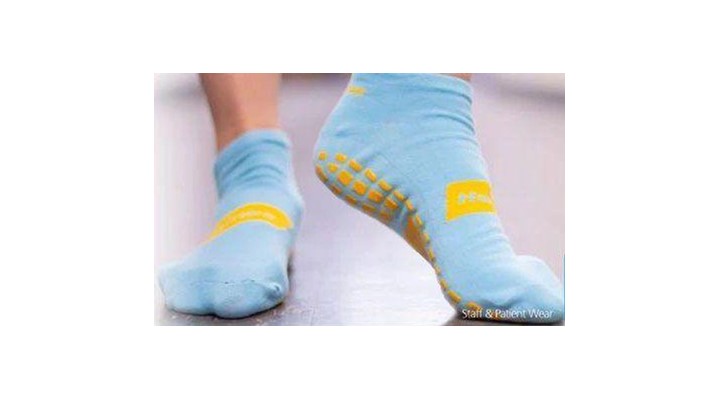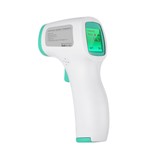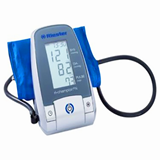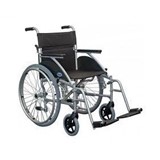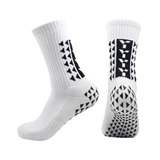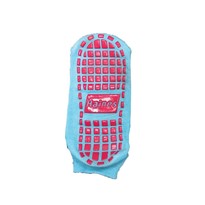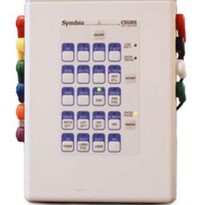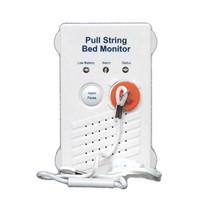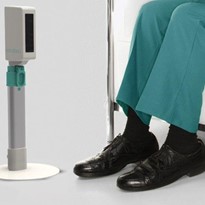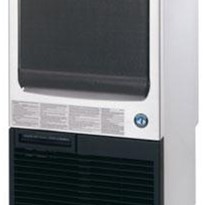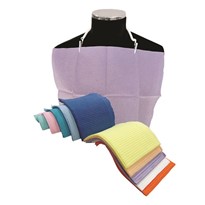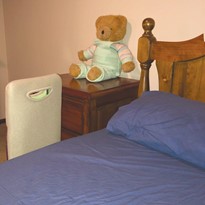Patient mobility and footwear
Studies have shown that 1 out of 3 in the age category of 65 and over, have had a fall in the past year (Hartung & Lalonde 2017)¹.
¹Hartung, Benjamin & Lalonde, Michelle. (2017). Geriatric Nursing 2017; 38 (10):1016. The use of non-slip socks to prevent falls among hospitalized older adults: A literature review.
Ill-fitting, slippery footwear is often the common nominator in these. The falls frequently have long term complications for the patients prompting a multiangle approach to decrease the risks (NICE 2013, Kerse et al. 2004 and Sherrington & Menz 2003)² 3,4.
Non-slip socks as a valued mobility aid
Further studies have shown slippery footwear to alter the gait and slow down the pace in the elderly, an indication that the wearer is feeling cautious. Bare feet had a preference over standard socks, and non-slip socks had a preference over standard socks in terms of the pattern of movement in participants (Tsai & Lin 2013 and Hatton et al. 2013).5 6
Single use vs reusable
Stock management aside (loosing socks) with single-use and disposable socks the grip is not compromised over time with laundering, and they significantly reduce the bacteria spread around by patients walking around the hospital by simply discarding the socks between different areas (Hartung & Lalonde 2017 and Tano & Melhus 2014)1,7
The Haines team are always curious to find new ways to improve the safety of patients and staff within our hospitals.
Haines Always Thinking.
References
¹Hartung, Benjamin & Lalonde, Michelle. (2017). Geriatric Nursing 2017; 38 (10):1016. The use of non-slip socks to prevent falls among hospitalized older adults: A literature review.
2National Institute for Health and Care Excellence. Fas in older people: assessing risk and prevention. Available at https://www.nice.org.uk/guidance/cg161 (Accessed February 2020).
³Ngaire Kerse et al. (2004). Australian and New Zealand Journal of Public Health 28(2):180–187. Wearing slippers, falls and injury in residential care. Available at https://onlinelibrary.wiley.com/doi/abs/10.1111/j.1467-842X.2004.tb00933.x
4Sherrington C, Menz HB. Age Ageing. 2003;32:310-4. An evaluation of footwear worn at the time of fall-related hip fracture.
5Tsai YJ and Lin SI. Gait Posture. 2013 Jan;37(1):88-92. Older adults adopted more cautious gait patterns when walking in socks than barefoot. Available at https://www.sciencedirect.com/science/article/abs/pii/S0966636212002524?via%3Dihub (Accessed February 2020) doi: 10.1016/j.gaitpost.2012.06.034
6Anna L. Hatton et al. (2013). Journal of the American Podiatric Medical Association: November 2013, Vol. 103, No. 6, pp. 471-479. Effects of Nonslip Socks on the Gait Patterns of Older People When Walking on a Slippery Surface. Available at https://www.japmaonline.org/doi/10.7547/1030471?url_ver=Z39.88-2003&rfr_id=ori:rid:crossref.org&rfr_dat=cr_pub%3dpubmed (Accessed February 2020) https://doi.org/10.7547/1030471
7Tano E, Melhus A. Infection Ecology & Epidemiology 2014;4:24314. Published 2014 Nov 11. Level of decontamination after washing textiles at 60°C or 70°C followed by tumble drying. Available at https://www.tandfonline.com/doi/full/10.3402/iee.v4.24314 (Accessed February 2020)
8AWTA Sock Slip Test Results 23/1/2020
?Elizabeth A Murphy (2011). Arch Intern Med. 2011;171(3):268–269. A Key Step for Hospitalized Elders: Comment on “Early Ambulation and Length of Stay in Older Adults Hospitalized for Acute Illness”. Available https://jamanetwork.com/journals/jamainternalmedicine/article-abstract/416400 (Accessed February 2020) doi:10.1001/archinternmed.2011.1


